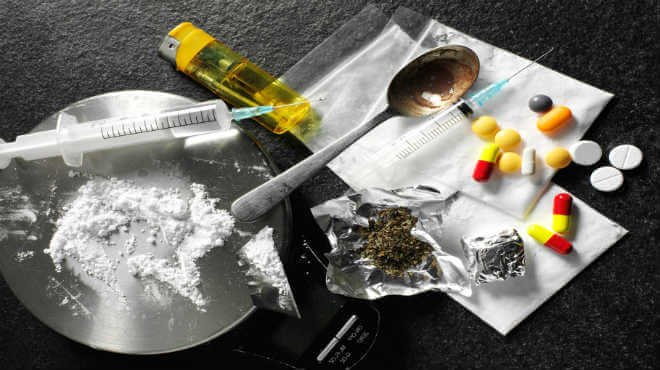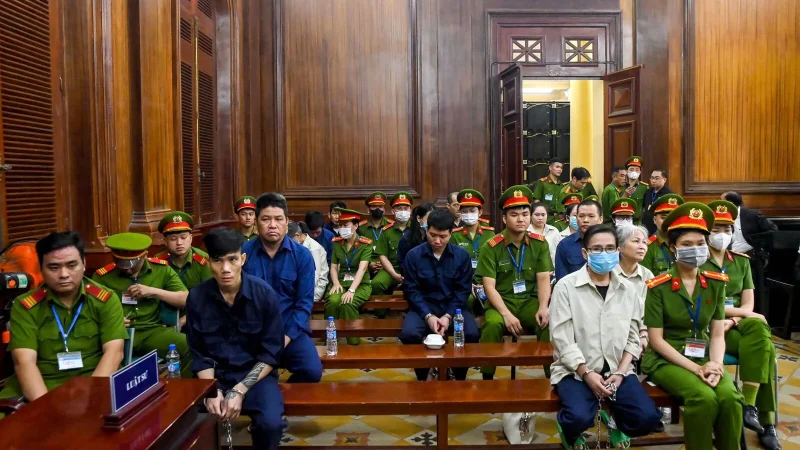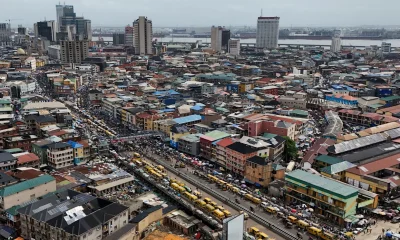Drugs
Nigeria’s Senate Proposes Death Penalty for Drug Trafficking
Nigeria’s Senate has introduced a controversial bill proposing the death penalty for drug trafficking in an effort to combat the country’s persistent drug-related issues. The legislation aims to address the significant social harm caused by drug trafficking and its links to organized crime. If passed, the bill would impose severe penalties on individuals involved in drug trafficking activities, reflecting the government’s determination to tackle this pressing issue.
BY GUEST ESSAY:

The Impact of Drug Trafficking: A Menace to Society
Drug trafficking remains a global scourge, wreaking havoc on individuals, communities, and nations alike. Nigeria’s recent proposal to impose the death penalty for drug trafficking underscores the severity of this issue and the urgent need for effective solutions. Beyond legislative measures, it is crucial to understand the multifaceted impact of drug trafficking and the underlying factors driving this illicit trade.
Destruction of Lives and Communities:
Drug trafficking not only fuels addiction but also devastates the lives of individuals and communities. Substance abuse leads to a myriad of health problems, including addiction, overdose, and the spread of infectious diseases such as HIV/AIDS. Families are torn apart, and communities suffer from increased crime rates and social instability. The toll on public health systems and social services is immense, straining already limited resources and hindering development efforts.
Fueling Organized Crime:
Behind the lucrative drug trade lie powerful criminal networks that exploit vulnerable populations and undermine the rule of law. Drug cartels and trafficking syndicates engage in violence, corruption, and coercion to protect their interests and expand their operations. The illicit proceeds from drug trafficking fund other criminal activities, including human trafficking, arms smuggling, and terrorism, further destabilizing societies and perpetuating cycles of violence.
The Role of Self-Serving Interests:
At the heart of the drug trade are individuals driven by greed and self-interest, willing to profit at the expense of others’ lives and well-being. These individuals prioritize financial gain over ethical considerations, exploiting systemic vulnerabilities and preying on the vulnerabilities of others. Their actions perpetuate a vicious cycle of exploitation and suffering, perpetuating the cycle of drug addiction and violence.
Addressing the Root Causes:
To effectively combat drug trafficking, it is essential to address the root causes driving this illicit trade. This requires a comprehensive approach that encompasses prevention, treatment, and law enforcement measures. Investing in education, healthcare, and social services can empower communities and reduce the demand for illicit drugs. Strengthening law enforcement and international cooperation is crucial for dismantling trafficking networks and holding perpetrators accountable.
Conclusion:
The proposal to impose the death penalty for drug trafficking in Nigeria highlights the gravity of the issue and the need for decisive action. However, addressing the root causes of drug trafficking requires a concerted effort from governments, civil society, and the international community. By tackling the underlying drivers of drug trafficking and prioritizing the well-being of individuals and communities, we can work towards a future free from the devastating impact of drugs on society.
Drugs
Ruto Gambles on Somaliland as Ethiopia Muscles Into Somalia Market

With Ethiopia undercutting prices and Somali traders protesting, Kenya scrambles to protect its billion-shilling khat trade—pivoting toward Somaliland and Jubaland for survival.
Kenya’s billion-shilling khat trade is under attack. Farmers strike in Meru. Protests erupt in Mogadishu. Ethiopia floods the market with cheap leaves. Ruto turns to Somaliland and Jubaland to salvage dominance. The khat war has begun.
Kenya’s most controversial export is under siege. The stimulant leaf known as khat—or miraa—has turned from a cash cow into a battlefield commodity, as Ethiopia ramps up smuggling into Somalia and threatens to dismantle Kenya’s long-standing dominance.
The crisis began in February, when Meru farmers, the backbone of Kenya’s khat trade, staged a strike over collapsing prices. Accusations flew: middlemen skimming profits, unauthorized taxes bleeding producers dry. Within days, Mogadishu felt the shock. Somali women traders took to the streets in protest as prices soared, making the once-daily stimulant an unaffordable luxury for ordinary consumers.
President William Ruto, under pressure from both farmers and political allies, moved quickly. Agriculture officials introduced higher official prices and a grading system meant to professionalize the trade. But Ruto’s real gambit was geopolitical: promising Meru growers that Kenya would diversify away from Mogadishu’s volatile market by opening new routes through Somaliland and Jubaland.
Ethiopia looms as the real spoiler. For years, Addis Ababa has quietly flooded Somali markets with cheap khat, bypassing Kenya and eroding its grip. Reports in 2023 and 2024 confirmed what Nairobi long feared: Ethiopia’s exports, often smuggled, are undercutting Kenyan suppliers and reshaping demand across the Horn of Africa.
For Meru’s farmers, who depend almost entirely on khat sales, the stakes are existential. For Somalia, where the leaf is daily ritual and political bargaining chip, the trade has already sparked unrest. And for Ruto, khat is no longer just a rural crop—it is a lever of foreign policy, forcing Kenya to play hardball in Hargeisa and Kismayo while fending off Ethiopia’s encroachment.
The khat war is no longer about leaves and bundles. It’s about power, access, and who dictates terms in Somalia’s fragile markets. Ethiopia wants in. Kenya wants to hold the gate. And Somalia’s streets are already showing what happens when the supply line snaps.
Drugs
Presidency or Cartel? Somali Leader Accused of Flooding Nation with Psychotropic

Mogadishu’s Cocaine President: The Silent War on Somali Youth.

Somalia’s President Hassan Sheikh is accused of masterminding a shadowy narcotics operation to manipulate elections and tighten control, as containers of drugs flood Mogadishu with zero accountability.
It’s a story too outrageous to ignore—unless you live in Somalia, where silence is survival and truth is treason. This week, two major drug busts rocked Mogadishu. Psychotropic substances—containers full—were seized at both the Aden Adde International Airport and Mogadishu Port. Tramadol, codeine, and other banned pills—enough to destabilize an entire generation—were uncovered. But here’s the kicker: no one has been arrested. No names. No suspects. No accountability.
In a country where even a whisper against power gets you disappeared, everyone knows what it means when such massive operations pass without consequence. Only one man sits above the law: President Hassan Sheikh Mohamud. And the streets are already talking—loudly.
The conspiracy isn’t even hidden anymore. The timing is strategic. With elections looming and his grip on power loosening, Hassan Sheikh is accused of waging a chemical war on his own people. By flooding the market with narcotics, he pacifies youth, weakens opposition, and builds a black-market war chest to buy loyalty, fund militias, and rig the ballot box.
No businessman dares touch this level of narcotics. No warlord dares move tons of psychotropics through state-controlled ports without clearance from the top. This isn’t cartel behavior—it’s state behavior.
And the numbers don’t lie. 48 sacks of narcotics at the airport. 2,496 packages. 189 more last month. Yet not a single arrest. Meanwhile, the presidential palace posts photos of national unity while the streets of Mogadishu rot under addiction and despair.
This isn’t just corruption—it’s treason.
A new chapter has begun in Somali history: the first sitting president using drugs as a political weapon. The world must ask: Is Hassan Sheikh a leader or a narco-dictator in disguise?
The silence from international partners is deafening. But the Somali people are awake. They know. They talk in cafes, on buses, online—the conspiracy has become common knowledge.
And if no one stops him, 2026 may be Somalia’s final election. Not because of war, but because its youth will be too high to fight back.
Somali police seize 48 sacks of narcotics at Mogadishu airport
Drugs
Tanzania Intercepts Drug-Smuggling Vessel on Indian Ocean

Tanzania’s recent seizure of a Kenyan boat transporting illegal khat highlights an escalating battle against drug smuggling along the East African coast. The operation by the Tanga Regional Police, acting on intelligence and vigilant maritime patrols, exposes the persistent vulnerabilities in border control and the increasing use of maritime routes for illicit trafficking.
Khat, a stimulant leaf legal in Kenya but banned in Tanzania, is a culturally embedded yet controversial substance, deeply woven into the social fabric of the Horn of Africa and parts of the Arabian Peninsula. Its illegality in Tanzania, however, reflects growing concerns about health, addiction, and social impact.
Despite strict laws—including life imprisonment for trafficking—smugglers persist, exploiting porous coastal borders and the vastness of the Indian Ocean to transport the drug.
The fleeing suspects in this latest case underscore the operational challenges facing maritime enforcement agencies. While the boat and cargo were secured, the escape of the perpetrators illustrates a need for even tighter surveillance, faster response capabilities, and stronger regional cooperation.
The ongoing threat demands that Tanzania and neighboring countries deepen intelligence sharing and joint operations to disrupt smuggling networks that fuel addiction and undermine social stability.
Furthermore, the seizure sheds light on the economic and security dimensions of khat trafficking. Beyond its illicit nature, the drug trade funds organized crime and may intersect with other destabilizing activities in the region, including arms smuggling and militant financing.
This complicates the security landscape for Tanzania, which already grapples with cross-border challenges including terrorism and illegal migration.
Tanga’s proactive stance—manifested through strengthened marine patrols and public appeals for community cooperation—is a critical step.
Law enforcement’s call for citizens to report suspicious activity is a reminder that combating smuggling is a collective responsibility that hinges on trust and collaboration between the public and authorities.
Regionally, this case spotlights the broader dynamics of East African drug control policies. Kenya’s legal cultivation and export of khat contrast starkly with Tanzania’s zero-tolerance approach, creating a natural smuggling corridor. Without harmonized policies and joint enforcement frameworks, traffickers will continue to exploit these regulatory gaps.
Finally, this incident offers a wake-up call about the need for comprehensive maritime security strategies. The Indian Ocean coast is not just a vital trade artery but a frontline in the fight against illicit trafficking.
As Tanzania tightens its grip, investment in technology, training, and regional partnerships will be essential to stem the tide of drug smuggling and secure the coastal communities vulnerable to its social and economic harms.
In sum, the seizure of the khat-laden boat is more than a law enforcement success; it’s a signal that Tanzania recognizes the serious threat posed by maritime drug trafficking.
The challenge now lies in sustaining momentum, enhancing cross-border collaboration, and addressing the root causes driving demand and supply in this complex illicit trade.
Drugs
Somali National with Drug Record Caught Sneaking Into U.S. from Canada

U.S. Border Patrol captures Yusuf Mohamed Ali after illegal entry from South Surrey—now faces deportation for drug-linked criminal past.
Another border breach—and this time, the threat comes with a rap sheet.
U.S. Border Patrol agents in Blaine, Washington apprehended Yusuf Mohamed Ali, a Somali national with a criminal history, after he illegally crossed into the U.S. from Canada on April 10. His arrest comes amid growing concerns over America’s porous northern border and the return of dangerous individuals with prior convictions.
Ali, who slipped across from South Surrey, was quickly intercepted by U.S. agents patrolling the region. Commissioner Rosario Pete Vasquez confirmed the arrest via social media, stating Ali is under investigation for drug-linked offenses and unlawful entry.
Authorities say Ali’s record includes previous drug-related crimes and immigration violations, making him a candidate for immediate deportation to Somalia.
This isn’t an isolated incident. With ongoing crises—conflict, economic collapse, and unemployment—fuelling migration, U.S. border officials are under pressure to clamp down on illegal entries that pose national security risks.
The arrest underscores the Biden administration’s struggle to maintain control over both southern and northern border crossings, where transnational networks exploit gaps to smuggle drugs and criminals alike.
For Yusuf Mohamed Ali, the U.S. stopover may be short-lived. But for American border officials, the real question is: how many more are getting through unseen?

Drugs
Vietnam Sentences 27 to Death for Largest Drug Trafficking Operation in Recent History

Cross-border ring led by notorious crime boss smuggled over 600 kilos of narcotics, leveraging encrypted communications to evade detection.
In one of the most severe crackdowns on drug trafficking in Vietnam’s history, a Ho Chi Minh City court has sentenced 27 individuals to death for their roles in a sprawling cross-border narcotics operation. The group, led by infamous crime boss Vu Hoang Anh, also known as Oanh Ha, smuggled 626 kilograms (1,380 pounds) of heroin, methamphetamine, and ketamine into Vietnam from Cambodia over a span of four years.
The network, comprising 35 members, operated between March 2018 and November 2022. It smuggled drugs across Vietnam’s borders, utilizing sophisticated methods to avoid detection. According to court findings:
- The gang used encrypted messaging apps like Signal and aliases such as “Colombia” and “Mosscau Russia.”
- Communication relied on phone numbers from the U.S. and Cambodia to obscure the origins of their transactions.
- The operation was described as “particularly serious” due to its scale and longevity.
While 27 members received the death penalty, the remaining eight were handed sentences ranging from 20 years to life in prison following a four-day trial.
Gang leader Vu Hoang Anh, alias Oanh Ha, emerged as a central figure in the trial. A notorious crime boss, Ha coordinated operations and oversaw the trafficking network, earning a reputation for eluding law enforcement. Her sentencing underscores Vietnam’s zero-tolerance stance on narcotics-related crimes.
Vietnam is known for its stringent penalties for drug offenses, including the death penalty for trafficking significant quantities. The case reflects the country’s ongoing battle against drug syndicates that exploit its porous borders and proximity to regional narcotics hubs like the Golden Triangle.
Despite such measures, cross-border trafficking remains a persistent challenge, with criminal organizations increasingly leveraging technology and international networks to facilitate their operations.
This high-profile case highlights the international nature of modern drug trafficking. The use of encrypted messaging apps and foreign phone numbers demonstrates how syndicates adapt to technological advancements to avoid detection. It also underscores the need for enhanced international cooperation to combat transnational organized crime.
The sentencing of 27 individuals to death in Vietnam underscores the gravity of the drug trafficking crisis and the government’s determination to combat it. While the penalties reflect the seriousness of the crime, the case also reveals the evolving tactics of drug syndicates, raising critical questions about the effectiveness of current enforcement measures and the need for global collaboration to disrupt such networks.
This landmark case serves as a stark reminder of the human and societal costs of the global narcotics trade.
Drugs
Singapore Executes Third Drug Trafficker in a Week

Singapore on Friday executed Rosman Abdullah, a 55-year-old man convicted of drug trafficking, marking the third hanging in the city-state within a week. The execution has reignited criticism from the United Nations and human rights advocates, who argue that capital punishment for drug-related crimes violates international human rights standards.
The Central Narcotics Bureau (CNB) stated that Abdullah had been convicted of trafficking 57.43 grams (2.03 ounces) of heroin, exceeding Singapore’s threshold of 15 grams for mandatory capital punishment under its stringent drug laws. “Rosman was accorded full due process under the law and was represented by legal counsel throughout the process,” the CNB said.
Abdullah’s hanging follows the November 15 execution of two others: a 39-year-old Malaysian and a 53-year-old Singaporean, both convicted of drug trafficking. These latest executions bring the total number of hangings in Singapore this year to eight, seven of which were related to drug offences.
Singapore resumed executions in March 2022 after a two-year moratorium during the COVID-19 pandemic. Since then, 24 individuals have been executed, according to an AFP tally.
The city-state’s strict drug laws have drawn condemnation from international bodies, including the United Nations, which argues that capital punishment for drug-related crimes violates international human rights law.
UN Human Rights spokesperson Ravina Shamdasani reiterated the organization’s opposition to the death penalty for drug offences, citing evidence of its ineffectiveness as a deterrent. “The use of the death penalty for drug-related offences is incompatible with international human rights law. There is increasing evidence showing the ineffectiveness of capital punishment as a deterrent,” Shamdasani said.
Human rights groups, including Amnesty International, have consistently criticized Singapore’s use of the death penalty, particularly for drug offences, which they argue disproportionately target marginalized and vulnerable individuals.
However, Singaporean officials have defended the practice, asserting that it has contributed to making the country one of the safest in Asia. The CNB maintains that capital punishment is reserved for the “most serious crimes, such as the trafficking of significant quantities of drugs which cause very serious harm” to individuals and society.
Singapore’s enforcement of the death penalty stands in stark contrast to the global trend toward abolition. While many countries, including several in Asia, have moved away from capital punishment, Singapore continues to argue its necessity for maintaining public safety.
Critics point out that capital punishment disproportionately affects low-level couriers rather than major traffickers. They also argue that the policy fails to address the root causes of drug trafficking, such as poverty and systemic inequality, and does little to deter crime.
As Singapore faces mounting international pressure to reconsider its stance, the debate highlights a broader question about the effectiveness of punitive measures in combating drug-related crimes. Advocates for reform urge the city-state to adopt approaches that focus on rehabilitation and systemic change rather than retribution.
For now, Singapore remains steadfast in its defense of capital punishment, setting the stage for continued tension with human rights organizations and the global community.
Drugs
Hot Days and Methamphetamine Are Now a Deadlier Mix in US

As temperatures soar to unprecedented levels across the United States, the dangerous combination of extreme heat and methamphetamine use is claiming more lives, particularly in the Southwest. On a scorching day in Phoenix this past June, two individuals—one found collapsed under a freeway bridge and another outside a business—succumbed to what experts warn is an increasingly fatal mix of heat and stimulant drugs.
A recent analysis by the Associated Press, using data from the Centers for Disease Control and Prevention (CDC), highlights a disturbing trend: methamphetamine is now involved in nearly 20% of heat-related deaths across the U.S. In states like Arizona, Texas, Nevada, and California, meth was detected in nearly one-third of such fatalities in 2023. As a powerful stimulant, methamphetamine exacerbates the body’s response to heat, impairing the brain’s ability to regulate temperature and placing immense strain on the heart.
Bob Anderson, chief of statistical analysis at the National Center for Health Statistics, points out that while other substances like alcohol and opioids can worsen the effects of heat, meth is particularly concerning. It elevates body temperature and creates a perfect storm when combined with high environmental temperatures. Even in a year when opioid overdoses have dominated headlines, methamphetamine is proving to be deadlier in heat-related cases.
The rise in meth-related deaths coincides with the emergence of cheaper, purer synthetic methamphetamine, largely manufactured in Mexico and smuggled across the U.S.-Mexico border. In Phoenix, one of the hottest cities in the country, meth was found in 75% of heat-related drug deaths in 2022. In neighboring Pima County, it accounted for a quarter of heat deaths this year. These statistics underscore the growing prevalence of the drug and its deadly interaction with record-breaking temperatures.
Phoenix, which experienced 113 consecutive days of temperatures exceeding 100°F this summer, is emblematic of the crisis. The city’s extreme heat, exacerbated by climate change, has made it increasingly perilous for those using methamphetamine. The region’s proximity to the U.S.-Mexico border also makes it a major hub for meth trafficking, contributing to the widespread availability of the drug.
Experts like Dr. Aneesh Narang, an emergency physician at Banner University Medical Center in Phoenix, have observed an alarming correlation between heatstroke cases and methamphetamine use. Narang notes that meth severely compromises the body’s natural defenses against heat, making it difficult to survive prolonged exposure to high temperatures. “All of your normal physiological ways of coping with heat are compromised with the use of methamphetamines,” he said.
Meth’s appeal, particularly among homeless populations, is linked to its low cost and potent effects. As Detective Matt Shay from the Maricopa County Sheriff’s Office explains, dealers frequently target homeless individuals, who are often exposed to the elements and rely on stimulants to stay awake and protect themselves from theft. “It’s a customer base that is easy to find and exploit,” he said.
The broader context of this crisis is a warming planet. This summer, which was Earth’s hottest on record, has made it easier for people to die from heat-related causes in regions like Phoenix, Las Vegas, and California’s southeastern deserts. The combination of higher average temperatures and the prevalence of meth use is proving fatal in these vulnerable areas.
Public health officials are taking steps to address the issue, but the scope of the problem is daunting. In Maricopa County, where Phoenix is located, public health officials have distributed brochures warning of the risks associated with stimulant use during extreme heat. Dr. Nick Staab, assistant medical director of the Maricopa County Department of Public Health, says this outreach effort aims to educate people, especially those in high-risk communities.
However, outreach alone may not be enough. Stacey Cope, director at Sonoran Prevention Works, a harm reduction nonprofit, suggests that more needs to be done to accommodate those who use drugs. Many cooling centers, designed to protect people from the heat, are not welcoming to individuals actively using substances, leaving some of the most vulnerable people without access to life-saving resources.
As extreme heat events become more frequent and severe, experts fear that the intersection of climate change and methamphetamine use will continue to take a toll, particularly on the most marginalized populations. Without significant intervention—both in terms of public health initiatives and harm reduction strategies—the deadly cycle of heat and meth use could worsen in the years to come.
Drugs
Mental Health Issues Prevents Many Somalis From Seeking Treatment or Assistance

-

 Analysis10 months ago
Analysis10 months agoSaudi Arabia’s Billion-Dollar Bid for Eritrea’s Assab Port
-

 Opinion17 years ago
Opinion17 years agoSomaliland Needs a Paradigm Change: Now or Never!
-

 Interagency Assessment5 days ago
Interagency Assessment5 days agoTOP SECRET SHIFT: U.S. MILITARY ORDERED INTO SOMALILAND BY LAW
-

 ASSESSMENTS9 months ago
ASSESSMENTS9 months agoOperation Geel Exposes the Truth: International Community’s Reluctance to Embrace Somaliland as a Strategic Ally
-

 Somaliland11 months ago
Somaliland11 months agoSomaliland and UAE Elevate Ties to Comprehensive Strategic Partnership
-

 EDITORIAL1 year ago
EDITORIAL1 year agoDr. Edna Adan Champions the Evolving Partnership Between Somaliland and Ethiopia
-

 ASSESSMENTS6 months ago
ASSESSMENTS6 months agoA Critique of the Hassan Sheikh Mohamud Administration and the Halane Enigma
-

 Africa2 years ago
Africa2 years agoHow Somaliland Could Lead the Global Camel Milk Industry































